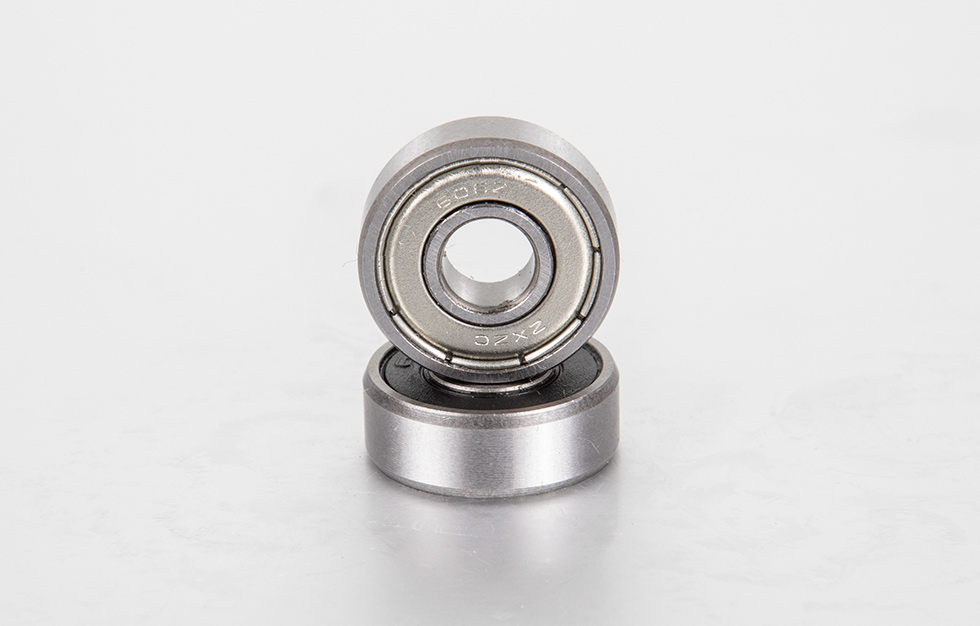News
Ningbo Hardchn bearing Co., Ltd.
Contact Us
Ningbo Hardchn bearing Co., Ltd.
ADD:No.501 Shizhu Rd, Linyu Foreign Investment Park, Jiaochuan Street, Zhenhai District, Ningbo city, China.
Tel:0086-574-86365365
Mobile:0086-(0)13858288142
Fax:0086-574-86454078
Principle of bearing lubrication The basis of bearing l […]
Principle of bearing lubrication
The basis of bearing lubrication principle: elastic fluid dynamics theory.
Question: Will the oil film be damaged by the load pressure?
The thickness of the oil film depends on the viscosity of the base oil. The higher the viscosity, the thicker the oil film.
Note: The bearing steel yield strength is 1750MPa (domestic manual data); the pressure that the oil film can withstand is 1000~5000MPa.
Grease lubrication
1. Features of grease lubrication:
●Simple operation.
●Good sealing effect, long service life, no maintenance, simple lubrication equipment.
●Applicable speed range: n*dm <500.000 [mm/min] (n=speed[1/min], n*=maximum speed; dm=average bearing diameter (D+d)/2 [mm]).
●Under low load conditions (speed, temperature, load) no lubricant change is required.
●The friction torque is small.
2. Replacement characteristics of grease lubrication:
●Lubricants must be changed regularly under high load conditions (speed, temperature, load).
●When replacing the grease, prepare a grease replacement quantitative valve and a waste grease collector.
●The principle of elastic fluid dynamics theory is also applicable to grease lubrication (oil is fixed in oil soap skeleton).

3. Selection characteristics of grease:
●Temperature: temperature characteristic table of grease.
●Speed: The rated working speed of the bearing.
The maximum speed of the bearing depends on the viscosity of the grease. According to the definition of viscosity, the viscosity of the grease affects the relative flow of the grease, so the viscosity is high and the speed is low.
●Viscosity: The viscosity of grease base oil.
Greases used in rolling bearings, the viscosity of the base oil at 40 ℃, usually between 15 to 500mm/s. If the viscosity of the grease base oil at 40°C is higher than 1000 mm2/s, the oil drop rate will be very low and the bearings will not be sufficiently lubricated. If the calculated viscosity at 40°C is much higher than 1000 mm2/s because of the low speed, it is best to use a grease with a viscosity of 1000 mm2/s or less and good oil-shedding properties, or use oil lubrication.
● Consistency; degree of dilution (soft and hard).
In applications with vibration, the grease will be repeatedly crushed, because under the action of vibration, the grease will be continuously thrown back into the bearing. In this case, the use of higher consistency grease will certainly help. But the hardness itself does not mean that it can provide sufficient lubrication, therefore, a grease with better mechanical stability should be used.
Oil lubrication
1. Selection of lubricating oil:
Mainly based on the viscosity required to provide adequate lubrication to the bearing at the operating temperature (minimum kinematic viscosity 01). The viscosity of lubricating oil will decrease as the temperature rises.
Selecting the actual working viscosity higher than the minimum kinematic viscosity will increase the operating temperature of the bearing at the same time due to the increase in viscosity. Therefore, this method has certain limitations to improve the lubrication conditions. (Viscosity ratio K=υ/υ1:, the range is preferably from 1 to 4)
2. Oil-poor lubrication or contaminated lubrication
The tiny particles have damaged the bearing contact surface. Solution, change oil.
3. Recommended method of bearing oil lubrication replacement:
●Lubricating oil must be changed once a year at an operating temperature of 50°C (122°F) to 70°C (158°F).
●The oil change interval must be doubled every time the temperature rises by 15°C (59°F).
●When the operating temperature reaches 100°C (212°F), the lubricant must be changed every 3 months.